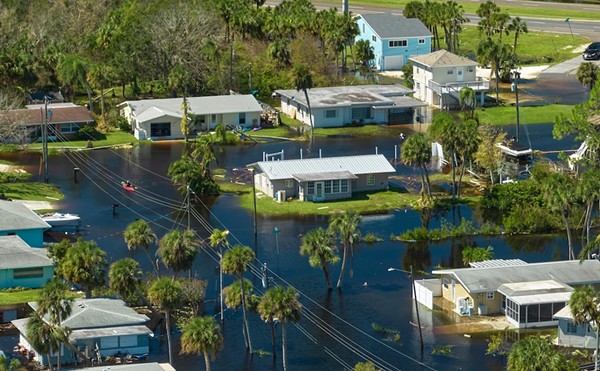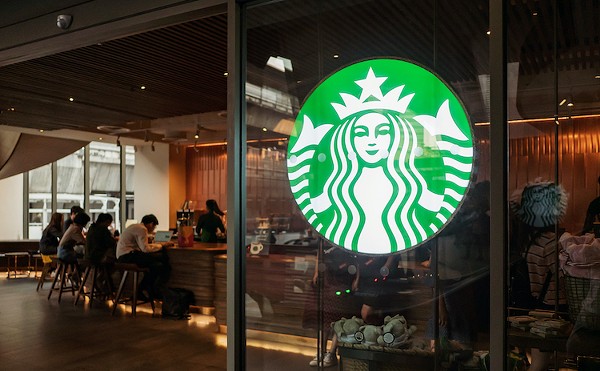By Feb. 15, America's prison population should have reached 2 million for the first time in history. The U.S. now has the world's highest incarceration rate and the most prisoners of any nation on earth. Despite having only 5 percent of the world's population, 25 percent of the world's 8 million prisoners are stuck behind our bars. More than 68,000 of those inmates sit in Florida prisons, up from 42,700 in 1990.
These disturbing statistics come courtesy of a new report, "The Punishing Decade," released by the Justice Policy Institute, a nonprofit research organization. The report analyzed the most up-to-date Justice Department statistics and trends, and concluded that in the 1990s, despite dramatic drops in crime rates, "far more prisoners were added to America's prisons and jails than in any decade in recorded history."
In addition to the skyrocketing numbers of inmates, the report found that nearly two-thirds of those incarcerated are imprisoned for nonviolent offenses. These nonviolent inmates are often victims of "three strikes" laws or mandatory sentences intended to keep violent, career criminals off the streets. Says JPI director Vincent Schiraldi: "Prison expansion is sold on the specter of Jack the Ripper, but we are increasingly locking up the Three Stooges."
Beside the human toll, the monetary cost of our soaring prison population is staggering. About $41 billion will be spent incarcerating people in 2000 -- more than double the entire federal welfare budget. Many states now spend more money on prisons than on higher education.
In Florida, the state's prison budget grew by $750 million in the last decade, while public funding for full-time college students dropped from an average of $7,156 per student to $6,035. The budget for education, however, is $11 billion more than the budget of the Department of Corrections, according to the watchdog agency Florida TaxWatch.
In a time when the economy is remarkably good, unemployment is low and crime rates are dropping, why are more people behind bars?
Part of the reason is that, with mandatory minimum sentences, prisoners are being forced to spend much more time behind bars. In Florida, there's actually been a drop of new incarcerations over the past decade -- 23,700 last fiscal year, compared with 44,700 in 1989-90. Meanwhile, sentences for drug offenders, which comprise 9.9 percent of the state's prison population, have doubled since 1993 under Florida's 85 percent minimum-sentencing policy. Drug offenders now spend an average of three years in prison. Sentencing for violent offenders, meanwhile, has increased to an average of 8 years, up from 4.8 years in 1993.
Even so, many sociologists say that society has an obligation to alleviate crowded prison conditions without building more prisons.
"Whatever the social problem this country has had to deal with, be it drug addiction, poverty or mental illness, our solution has been to build another prison," says Jason Ziedenberg, of the JPI. "We need to draw a line in the sand and say, '2 million is too many,' and find humane and less costly solutions than prison to solve this nation's social ills."
Even some elements of the prison industry think our incarceration rates have gone overboard, but they shift the blame to policymakers in Washington.
"We don't disagree that we are incarcerating too many people," Jim Turpin, the American Correctional Association's spokesman, told APBNews.com. "If you call for 100,000 new police on the streets [as President Clinton did in 1992], what are they to do but arrest people?"
"People say 2 million is too much," Turpin continued, "but will anybody in the debate on the 2000 crime bill stand up and say that?"
Will they? Probably not. Sensational media coverage of violent crime continues to feed the public clamor for tougher laws and harsher sentences. As Vincent Schiraldi wrote in a recent Los Angeles Times op-ed, "When politicians conduct focus groups of likely voters, they are fed back fears of crime. They then begin legislating and talking about crime, churning up reporters to again cover crime, whether crime is on the increase or not. And the band plays on."
The biggest victims of this political myopia are young men of color. Although African-Americans make up only 13 percent of the American population, the study points out that half of the 1.2 million state and federal prisoners are African-American.
In Florida the numbers are much worse. Continuing a trend throughout the 1990s, black prisoners outnumber white inmates 37,718 to 29,405.
One in three black American men between the ages of 20 and 29 were under some form of criminal-justice control (in prison, jail, parole or probation) in 1995, and 13 percent of the black adult male population has lost the right to vote due to their involvement in the criminal-justice system.
"Halfway through Black History Month, our prisons and jails represent the sad reality that one out of three young African-American males are under some form of criminal-justice control," said the JPI's Ziedenberg. "The nation must find alternatives to incarceration to solve America's pressing social problems."


















